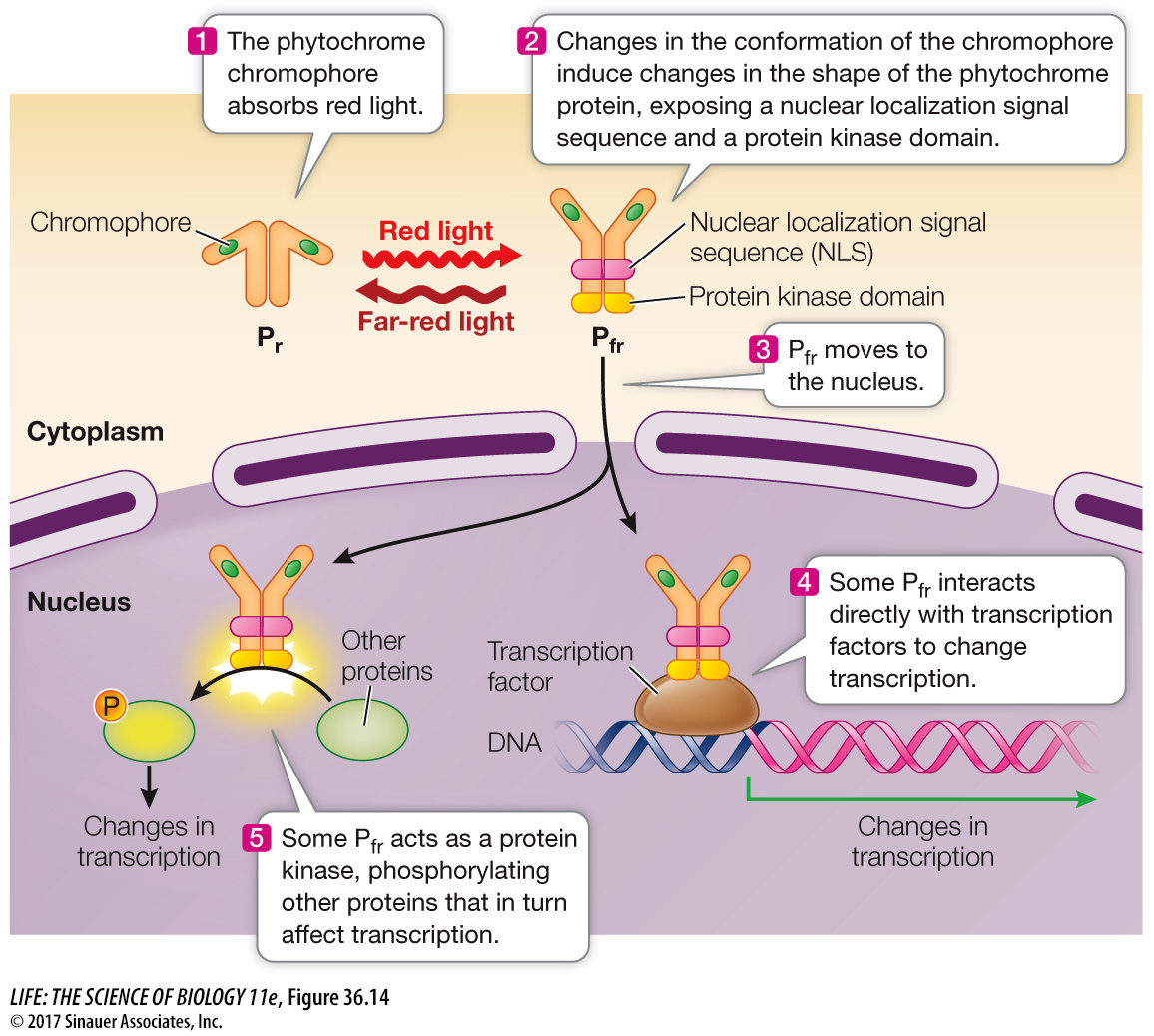Phytochrome stimulates gene transcription
How does phytochrome, or more specifically Pfr, work? Phytochrome has two subunits (Figure 36.14), each composed of a protein chain and a chromophore. Gene transcription is stimulated when Pr is converted to the Pfr isoform. When Pr absorbs red light, the chromophore changes shape, causing change in the conformation of the protein itself, from the Pr form to the Pfr form. Conversion to the Pfr form exposes two important regions of the phytochrome protein, both of which affect transcriptional activity:
Exposure of a nuclear localization sequence (see Figure 14.18) results in movement of Pfr from the cytoplasm to the nucleus. Once in the nucleus, Pfr binds to transcription factors and thereby stimulates expression of genes involved in photomorphogenesis.
Exposure of a protein kinase domain causes Pfr protein to phosphorylate itself and other proteins involved in red-
light signal transduction, resulting in changes in the activity of transcription factors.

The effect of activating these transcription factors is quite large: in Arabidopsis, phytochrome affects an amazing 2,500 genes (10 percent of the entire genome!) by either increasing or decreasing their expression. Some of these genes are related to hormones. For example, when Pfr is formed in seed germination, genes for gibberellin synthesis are activated and genes for gibberellin breakdown are repressed. As a result, gibberellins accumulate and seed reserves are mobilized.